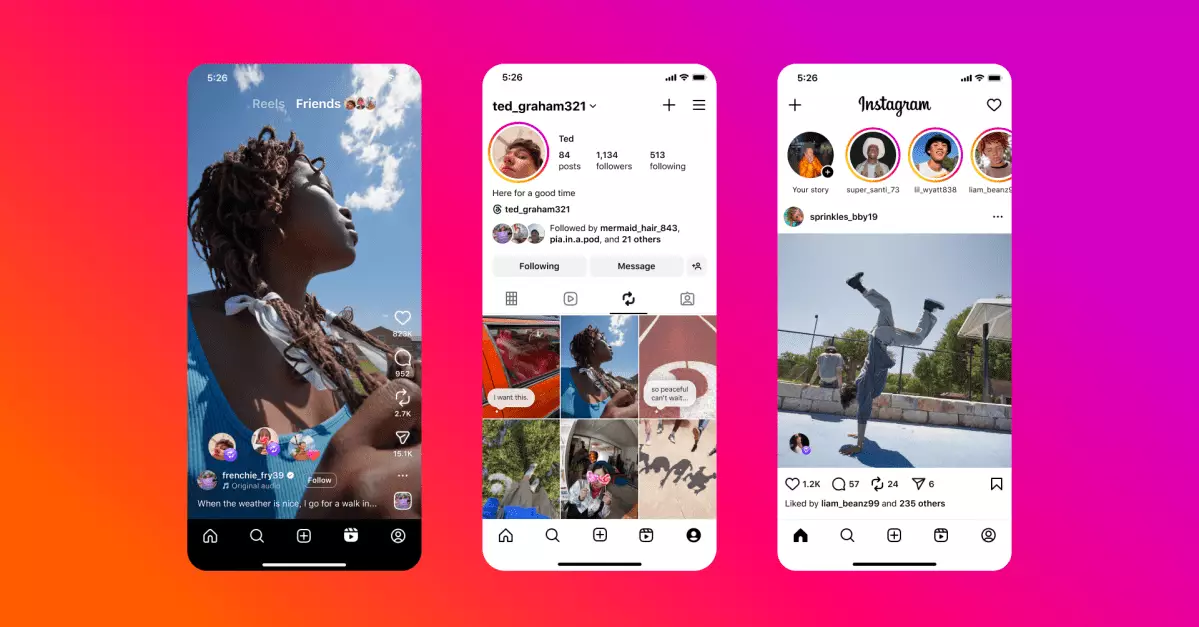Instagram is taking a strategic leap by introducing a TikTok-inspired reposting feature, signaling a clear shift towards a more dynamic, video-centric platform. This move isn’t merely copying a competitor; it’s an acknowledgment that users crave varied ways to share and consume content. By enabling users to repost public reels and grid posts directly to their profiles, Instagram transforms reposting from a cumbersome story repost into an integrated, permanent feature. This change empowers users to curate their feeds more meaningfully and promotes content virality across the network. However, the real question is whether this adaptation will ultimately serve as a tool for authentic connection or just another layer of superficial content churn.
While initially, reposts were confined to fleeting stories, their new placement in dedicated tabs suggests a desire to elevate shared content into the core user experience. For creators, this could be a double-edged sword. On one hand, it provides additional exposure and recognition; on the other, it risks diluting original content’s uniqueness as reposts become normalized. Moreover, the feature’s success hinges on whether users see genuine value in resharing or simply adopt it as a social media clutter tactic. Instagram’s challenge lies in balancing these dynamics so that reposting enhances community rather than cluttering feeds with redundant content.
Blurring Boundaries with Social Features from Competitors
Instagram’s innovations extend beyond reposts, borrowing elements from platforms like Snapchat and TikTok to deepen user engagement. The introduction of an opt-in location map reminiscent of Snap Map exemplifies this strategy. Is it an overhaul that will enhance real-life connections, or is it a privacy Pandora’s box? The map allows users to share their current or last known location and view trending content from specific spots, such as festivals. It fosters a sense of immediacy and shared experience, making the platform a more interactive social space.
Yet, this feature also raises concerns about privacy invasion and the potential for misuse. While some users may appreciate the ability to discover what’s happening around them in real-time, many will question the necessity of broadcasting their location, even selectively. Instagram’s gamble here is that the sense of immediacy will invigorate platform activity and make content more contextually rich. However, it remains to be seen whether users will embrace this feature or view it as an intrusive echo of Snapchat’s vulnerabilities.
Reactive Changes to Customer Feedback and Platform Evolution
Perhaps the most controversial update pertains to the revamped activity tab that displays friends’ interactions with Reels, likes, and reposts. This feature, which echoes the disappearance of the once-popular “activity” tab, fuels a debate about privacy, social pressure, and platform transparency. Previously, users worried about the visibility of their engagements, fearing judgment or social anxiety. Now, Instagram offers increased controls, allowing users to hide their interactions or mute specific activities.
This response underscores Instagram’s recognition of the nuanced relationship users have with privacy. It suggests an understanding that transparency isn’t always the goal; sometimes, users prefer control over their digital footprints. Yet, the broader implication is whether these updates will rekindle the platform’s original charm—a place to share personal moments freely—or accelerate the trend toward a highly curated, voyeuristic space that fosters comparison rather than genuine connection.
Can These Changes Reverse the Decline?
The fundamental challenge for Instagram remains rooted in its shifting identity. Once celebrated as a photo-sharing haven for friends and family, it’s increasingly morphing into a content aggregation and entertainment hub competing fiercely with TikTok. The influx of Reels and new features suggests a platform attempting to keep pace with short-form video trends, but at what cost?
For creators, this could mean less organic reach and more noise, turning what was once a personal gallery into a battleground of algorithms and sponsored content. For users seeking authentic social interaction, the current trajectory feels less like a community and more like a marketplace of fleeting moments. The new features might boost engagement numbers temporarily, but the question remains whether they can foster genuine, lasting relationships on a platform drifting towards constant entertainment.
As Instagram continues to evolve, its future depends on a delicate balance: innovating without alienating its core user base. The recent updates signal that Instagram is aware of its flaws—cluttered feeds, diminished organic reach, and privacy concerns—and is attempting to retool itself. But whether these moves will be enough to regain trust and relevance, especially among mature users and content creators who crave authenticity, remains highly uncertain.

